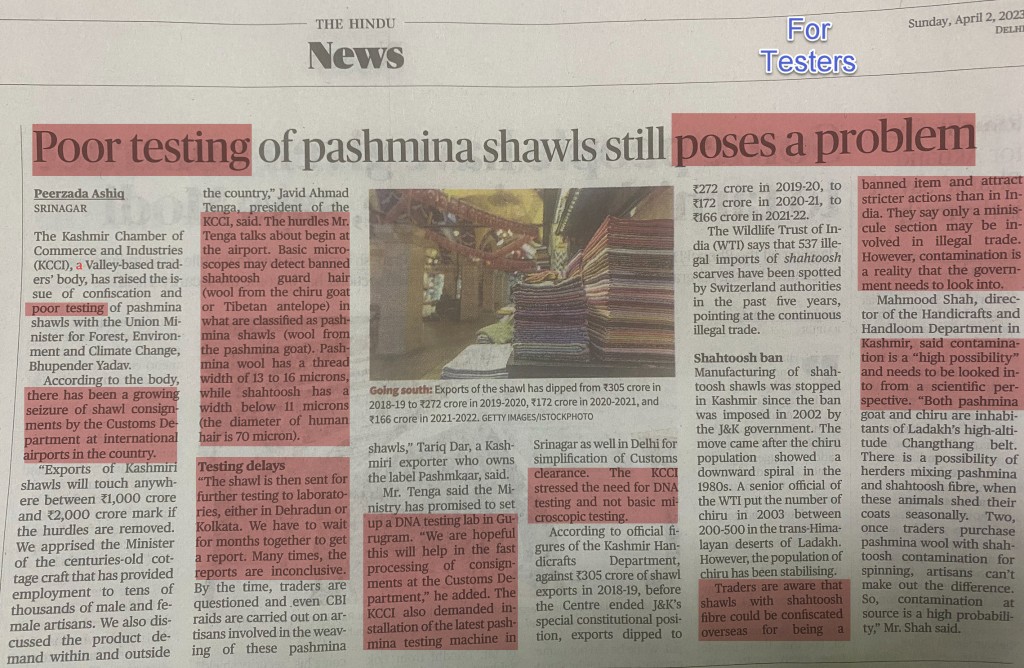I am unsure if you know, but Amit Trivedi (An Indian music composer, lyricist, and singer) undoubtedly has a melodious voice and excellent music-composing skills.
His song. Pashmina, from Fitoor (2016), can give any music lover a soothing pleasure.
If you are reading this post, you may want to try the song on your favorite music streaming application, and if you choose to do so, pay attention, especially to the last few seconds where the guitar is played beautifully. I loved that.
Back now? Good
So what about the Pashmina song, and what does it have to do with testing? Nothing.
It was just for your brain’s refreshment. So thank yourself now and me later.
Now, I am a vivid reader of The Hindu (One of India’s daily published newspapers). So every morning, when I pick up the newspaper and before even opening the front page, I pray that I must see at least all pages full of news on testing.
LOL! What a lunatic thinking style. And…
Trust me (in the 21st century) or not, the God of Testing almost always listens to my prayers and gives something to read on Tests, Testing, and Testers. The lucky tester I am. No?
So one day, in December 2022, I noticed an exciting news (article) on complaints about using obsolete testing methods and techniques to detect and confirm contamination of Pashmina Shwals with Shahtoosh fibre.
See the image below as I captured a click from the newspaper hardcopy.

While reading the news, I started imagining the following structure
- Mission of testing and stakeholder(s)
- Testing process and test cycles
- Testing results and bug and product status reporting
- Decisions based on results
And, here are my interpretations from the statements made in the newspaper report
Mission of testing:
- Test to find evidence of no contamination
- Establish the difference between two materials that have similar physical properties and tangibility.
- Test quickly and reliably.
- Report testing results as reasonably quickly as possible so that..
- Further testing processes and the final export approval process is quick.
- There are no additional issues on the importing side
- Finally, traders generate sales and revenue to remain in business
After reading the report, I found it safe to talk only about the reported observations on the Testing process, methods adopted, and consequences as mentioned in the paper because commenting on the decision process, decision-making, and decisions is not my area of expertise.
From the highlighted areas, you should be able to identify some commonalities between testing software to detect bugs and testing highly loved (at least in my part of the country) pashmina shawls to detect contamination.
I am listing down those commonalities as far as I can understand…
- Obsolete testing methods
- Predominantly observed limitations of old testing techniques
- e.g. Light Microscopy and / or forensic methods, in the context of above report
- The human expertise limitations: This may be controversial for some and require a skeptical POV, but now let’s assume what is reported as ‘As is.’
- Increased number of false positives
- Lack of advanced test technique(s)
- DNA testing
- Scanning electron microscopic tests
- Delayed testing cycles & inconclusive results (including false positives) resulting into.
- Loss of reputation, sales and revenue
- Financial and criminal prosecution
Note: If you read this news closely and in iterations, let me tell you this, and I am not exaggerating (at least in my mind, LOL).
You will start appreciating that this article (news) offers great insights to a curious and attentive software tester.
- Start reflecting on his/her testing skills
- Understand the value of a expert tester and his tools/methods
- Realize power of learning about testing problems in domains other than software
- Value of context driven and good testing
- Adverse impacts of inadequate testing methods
Now as I told you that I pray and God of Testing responds, I was praying again and this popped up on April2, 2023
See the image below as I captured a click from the newspaper hardcopy.

I don’t think I need to list down the commonalities once again. But,
I repeat that you will start appreciating that this article (news) offers great insights to a curious and attentive software tester.
- Start reflecting on his/her testing skills
- Understand the value of a expert tester and his tools/methods
- Realize power of learning about testing problems in domains other than software
- Value of context-driven and good testing
- Adverse impacts of inadequate testing methods
I enjoyed typing this post and hope you have enjoyed reading it; if not, it is okay.
Stay tuned for the next post; if I would be consistent here. LOL!
